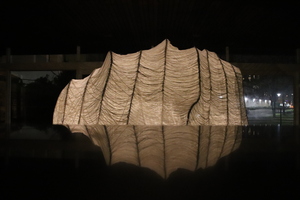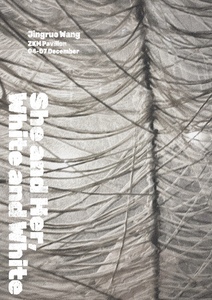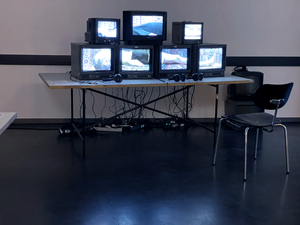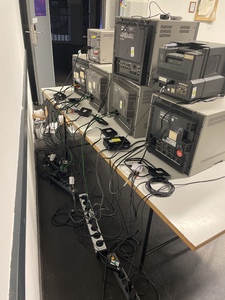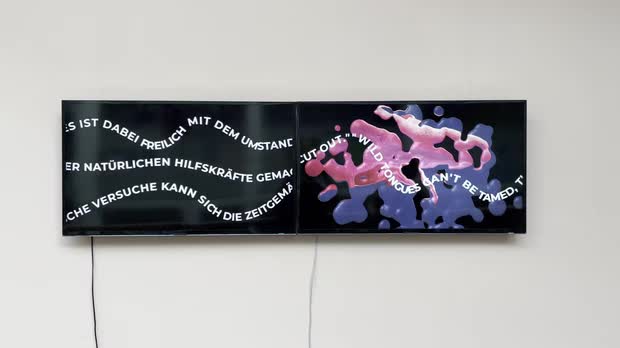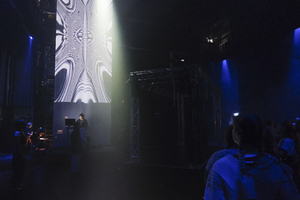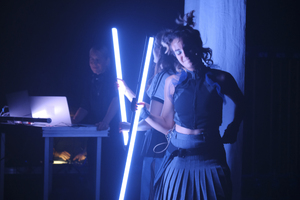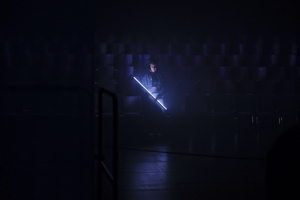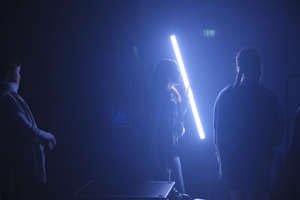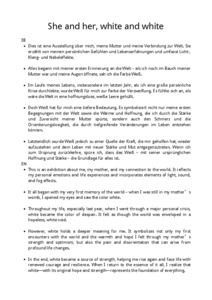"Social-Media-Kanäle der HfG"
| Begriff | Social-Media-Kanäle der HfG |
| Metakey | Freigabe Nutzung HfG (rights:usage_hfg) |
| Typ | Keyword |
| Vokabular | Rechte |
1101 Inhalte
- Seite 1 von 92
She and her, white and white
- Titel
- She and her, white and white
- Autor/in
- Kategorie
- Titel
- She and her, white and white
- Urheberrechtshinweis
- © Jingruo Wang
- Rechtsschutz/Lizenz
- Freigabe Nutzung HfG
- Medienersteller/in
- Beziehung/Funktion
- Projektleiter/in
- Semester
- Studiengang
- Typ der Abschlussarbeit
- Importiert am
- 12.12.2024
- Übergeordnete Sets
- 1
She and her, white and white
- Titel
- She and her, white and white
- Autor/in
- Kategorie
- Titel
- She and her, white and white
- Urheberrechtshinweis
- © Jingruo Wang
- Freigabe Nutzung HfG
- Medienersteller/in
- Projektleiter/in
- Semester
- Studiengang
- Typ der Abschlussarbeit
- Importiert am
- 12.12.2024
- Übergeordnete Sets
- 1
Videowelt und fraktale Entspannung
- Titel
- Videowelt und fraktale Entspannung
- Autor/in
- Beschreibung (de)
- In seinem Text „Videowelt und fraktales Subjekt,“ beschreibt Baudrillard ein Subjekt der digitalen Ära, das danach trachtet, „sich selber in seinen Bruchstücken anzugleichen“ und anstatt nach seinem vollkommenen Idealbild, sehnt es sich nach der „Formel einer endlosen genetischen Reproduktion“ (Baudrillard 1989). Technologische Reduplikationen und Erscheinungsweisen des Körpers formen das Konzept des neuen Selbst. „Es geht heute nicht einmal mehr darum, einen Körper zu haben, sondern an seinen Körper angeschlossen (connected) zu sein.“
"Videowelt und fraktale Entspannung" ist als eine Mehrkanal-Installation, die sich auf das Konzept des fraktalen Körpers nach Baudrillard und der Interpassivität nach Pfaller stützt. Sieben Bildschirme zeigen die Verlängerung des menschlichen Körpers, während ein beauftragter Bot ein ungezwungenes Entspannungsprogramm durchführt. Basierend auf der progressiven Muskelentspannung nach Edmund Jacobson ermöglicht die Installation den Betrachter:innen, an der angeleiteten Choreografie teilzuhaben und so die Verbundenheit des Selbst mit der Technik zu erfahren. So ist sie ironisch als eine interpassive ‘Oase der Entspannung‘ konzipiert.
- In seinem Text „Videowelt und fraktales Subjekt,“ beschreibt Baudrillard ein Subjekt der digitalen Ära, das danach trachtet, „sich selber in seinen Bruchstücken anzugleichen“ und anstatt nach seinem vollkommenen Idealbild, sehnt es sich nach der „Formel einer endlosen genetischen Reproduktion“ (Baudrillard 1989). Technologische Reduplikationen und Erscheinungsweisen des Körpers formen das Konzept des neuen Selbst. „Es geht heute nicht einmal mehr darum, einen Körper zu haben, sondern an seinen Körper angeschlossen (connected) zu sein.“
- Beschreibung (en)
- In his text "Video World and Fractal Subject," Baudrillard describes a subject of the digital era that strives to "align itself with its own fragments." Rather than aspiring to its perfect ideal image, it yearns for the "formula of an endless genetic reproduction" (Baudrillard 1989). Technological reduplications and manifestations of the body shape the concept of the new self. "Today, it is no longer even about having a body, but about being connected to one's body."
"Video World and Fractal Relaxation" is a multi-channel installation that draws on Baudrillard's concept of the fractal body and Pfaller's theory of interpassivity. Seven screens depict the extension of the human body while a programmed bot conducts a casual relaxation routine. Based on Edmund Jacobson's progressive muscle relaxation, the installation allows viewers to participate in the guided choreography, offering them an experience of the self's connection with technology. It is ironically designed as an interpassive "oasis of relaxation."
- In his text "Video World and Fractal Subject," Baudrillard describes a subject of the digital era that strives to "align itself with its own fragments." Rather than aspiring to its perfect ideal image, it yearns for the "formula of an endless genetic reproduction" (Baudrillard 1989). Technological reduplications and manifestations of the body shape the concept of the new self. "Today, it is no longer even about having a body, but about being connected to one's body."
- Kategorie
- Typ des Projekts/Werks
- Schlagworte
- Datierung
- 07.2023
- Mitwirkende
- Sprache
- Material
- Dauer
- 15:30
- Ort: Institution
- Ort
- R. 112
- Stadt
- Titel
- Videowelt und fraktale Entspannung
- Urheberrechtshinweis
- © ewa wasilewska
- Freigabe Nutzung HfG
- Medienersteller/in
- Medien-Beschreibung
- Mehrkanal-Installation 15’30’’
- Medien-Beschreibung (en)
- Multi-channel installation, 15'30''
- Studiengang
- Importiert am
- 16.12.2024
- Übergeordnete Sets
- 0
Videowelt und fraktale Entspannung - Rückseite der Installation
- Titel
- Videowelt und fraktale Entspannung - Rückseite der Installation
- Autor/in
- Kategorie
- Typ des Projekts/Werks
- Datierung
- 07.2023
- Dauer
- 15:30
- Titel
- Videowelt und fraktale Entspannung - Rückseite der Installation
- Urheberrechtshinweis
- © ewa wasilewska
- Rechtsschutz/Lizenz
- Freigabe Nutzung HfG
- Medienersteller/in
- Beziehung/Funktion
- Medien-Beschreibung
- Rückseite der Installation; mehrere Elementen angeschlossen an die „Maschine“ der Selbstreferenz: HDMI-Analog Konvertern, Android Media Players, DC 5V Stromversorgungsgeräte
- Studiengang
- Importiert am
- 16.12.2024
- Übergeordnete Sets
- 0
Backwaters of Algorithms
- Titel
- Backwaters of Algorithms
- Autor/in
- Beschreibung (de)
- Das Werk stützt sich auf Theodor Rehbocks Buch von 1898, "Deutsch Südwestafrika. Seine wirtschaftliche Erschließung unter besonderer Berücksichtigung der Nutzbarmachung des Wassers", um die durch die Wissenschaft gerechtfertigte Ausbeutung zu untersuchen. Es verweist auch auf die Regulierung des Rheinflussbettes und die Standardisierung von Sprachen als weitere Folgen des "aufgeklärten Kolonialismus". Die Videoinstallation untersucht die Erzählungen wissenschaftlicher Erkundungen während der Kolonialzeit, eingebettet in einen futuristischen Kontext.
- Beschreibung (en)
- The work draws on Theodor Rehbock's 1898 book, "Deutsch Südwestafrika. Seine wirtschaftliche Erschließung unter besonderer Berücksichtigung der Nutzbarmachung des Wassers" ("German South West Africa: Its Economic Development with Special Consideration of the Utilization of Water") to examine the exploitation justified by science. It also references the regulation of the Rhine riverbed and the standardization of languages as further consequences of "enlightened colonialism." The video installation explores the narratives of scientific explorations during the colonial era, embedded in a futuristic context.
- Kategorie
- Typ des Projekts/Werks
- Schlagworte
- Datierung
- 07.2024
- Mitwirkende
- Sprache
- Dauer
- 3 min.
- Ort: Institution
- Titel
- Backwaters of Algorithms
- Urheberrechtshinweis
- © ewa wasilewska
- Rechtsschutz/Lizenz
- Freigabe Nutzung HfG
- Medienersteller/in
- Beziehung/Funktion
- Projektleiter/in
- Semester
- Studiengang
- Importiert am
- 16.12.2024
- Übergeordnete Sets
- 0
live performance >Raving Realities<
- Titel
- live performance >Raving Realities<
- Beschreibung (de)
- Premiere am 23.5.2024 auf der Bühne der adk Ludwigsburg
Regie: Alize Heiser
Es spielten: Anna Tarasenko, Marix Turskiy
Dramaturgie: Bella Enderlein, Gabriel Kowak
Raumkonzept: Ewa Wasilewska
Kostüm: Klara Beck, Julia Freisinger
Live Sound: Tina Jander
Visual Arts: Victoria Mikhaylova
Text: Alize Heiser, Lydia Henkel, Anna Tarasenko, Marix Turskiy
- Premiere am 23.5.2024 auf der Bühne der adk Ludwigsburg
- Kategorie
- Typ des Projekts/Werks
- Schlagworte
- Datierung
- 23.05.2024
- Dauer
- 1h
- Ort: Institution
- Stadt
- Beteiligte Institution(en)
- Titel
- live performance >Raving Realities<
- Titel (en)
- live performance >Raving Realities<
- Urheberrechtshinweis
- © Denis Mörgenthaler
- Rechtsschutz/Lizenz
- Freigabe Nutzung HfG
- Medienersteller/in
- Beziehung/Funktion
- Semester
- Importiert am
- 16.12.2024
- Übergeordnete Sets
- 1
live performance >Raving Realities<
- Titel
- live performance >Raving Realities<
- Beschreibung (de)
- Premiere am 23.5.2024 auf der Bühne der adk Ludwigsburg
Regie: Alize Heiser
Es spielten: Anna Tarasenko, Marix Turskiy
Dramaturgie: Bella Enderlein, Gabriel Kowak
Raumkonzept: Ewa Wasilewska
Kostüm: Klara Beck, Julia Freisinger
Live Sound: Tina Jander
Visual Arts: Victoria Mikhaylova
Text: Alize Heiser, Lydia Henkel, Anna Tarasenko, Marix Turskiy
- Premiere am 23.5.2024 auf der Bühne der adk Ludwigsburg
- Kategorie
- Typ des Projekts/Werks
- Schlagworte
- Datierung
- 23.05.2024
- Dauer
- 1h
- Ort: Institution
- Stadt
- Beteiligte Institution(en)
- Titel
- live performance >Raving Realities<
- Titel (en)
- live performance >Raving Realities<
- Urheberrechtshinweis
- © Denis Mörgenthaler
- Rechtsschutz/Lizenz
- Freigabe Nutzung HfG
- Medienersteller/in
- Beziehung/Funktion
- Semester
- Importiert am
- 16.12.2024
- Übergeordnete Sets
- 1
live performance >Raving Realities<
- Titel
- live performance >Raving Realities<
- Beschreibung (de)
- Premiere am 23.5.2024 auf der Bühne der adk Ludwigsburg
Regie: Alize Heiser
Es spielten: Anna Tarasenko, Marix Turskiy
Dramaturgie: Bella Enderlein, Gabriel Kowak
Raumkonzept: Ewa Wasilewska
Kostüm: Klara Beck, Julia Freisinger
Live Sound: Tina Jander
Visual Arts: Victoria Mikhaylova
Text: Alize Heiser, Lydia Henkel, Anna Tarasenko, Marix Turskiy
- Premiere am 23.5.2024 auf der Bühne der adk Ludwigsburg
- Kategorie
- Typ des Projekts/Werks
- Schlagworte
- Datierung
- 23.05.2024
- Dauer
- 1h
- Ort: Institution
- Stadt
- Beteiligte Institution(en)
- Titel
- live performance >Raving Realities<
- Titel (en)
- live performance >Raving Realities<
- Urheberrechtshinweis
- © Denis Mörgenthaler
- Rechtsschutz/Lizenz
- Freigabe Nutzung HfG
- Medienersteller/in
- Beziehung/Funktion
- Semester
- Importiert am
- 16.12.2024
- Übergeordnete Sets
- 1
live performance >Raving Realities<
- Titel
- live performance >Raving Realities<
- Beschreibung (de)
- Premiere am 23.5.2024 auf der Bühne der adk Ludwigsburg
Regie: Alize Heiser
Es spielten: Anna Tarasenko, Marix Turskiy
Dramaturgie: Bella Enderlein, Gabriel Kowak
Raumkonzept: Ewa Wasilewska
Kostüm: Klara Beck, Julia Freisinger
Live Sound: Tina Jander
Visual Arts: Victoria Mikhaylova
Text: Alize Heiser, Lydia Henkel, Anna Tarasenko, Marix Turskiy
- Premiere am 23.5.2024 auf der Bühne der adk Ludwigsburg
- Kategorie
- Typ des Projekts/Werks
- Schlagworte
- Datierung
- 23.05.2024
- Sprache
- Dauer
- 1h
- Ort: Institution
- Stadt
- Beteiligte Institution(en)
- Titel
- live performance >Raving Realities<
- Titel (en)
- live performance >Raving Realities<
- Urheberrechtshinweis
- © Denis Mörgenthaler
- Rechtsschutz/Lizenz
- Freigabe Nutzung HfG
- Medienersteller/in
- Beziehung/Funktion
- Semester
- Studiengang
- Importiert am
- 16.12.2024
- Übergeordnete Sets
- 1
live performance >Raving Realities<
- Titel
- live performance >Raving Realities<
- Beschreibung (de)
- Premiere am 23.5.2024 auf der Bühne der adk Ludwigsburg
Regie: Alize Heiser
Es spielten: Anna Tarasenko, Marix Turskiy
Dramaturgie: Bella Enderlein, Gabriel Kowak
Raumkonzept: Ewa Wasilewska
Kostüm: Klara Beck, Julia Freisinger
Live Sound: Tina Jander
Visual Arts: Victoria Mikhaylova
Text: Alize Heiser, Lydia Henkel, Anna Tarasenko, Marix Turskiy
- Premiere am 23.5.2024 auf der Bühne der adk Ludwigsburg
- Kategorie
- Typ des Projekts/Werks
- Schlagworte
- Datierung
- 23.05.2024
- Dauer
- 1h
- Ort: Institution
- Stadt
- Beteiligte Institution(en)
- Titel
- live performance >Raving Realities<
- Titel (en)
- live performance >Raving Realities<
- Urheberrechtshinweis
- © Denis Mörgenthaler
- Rechtsschutz/Lizenz
- Freigabe Nutzung HfG
- Medienersteller/in
- Beziehung/Funktion
- Semester
- Importiert am
- 16.12.2024
- Übergeordnete Sets
- 1
She and her, white and white
- Titel
- She and her, white and white
- Autor/in
- Kategorie
- Titel
- She and her, white and white
- Urheberrechtshinweis
- © Jingruo Wang © Dakang Wang
- Rechtsschutz/Lizenz
- Freigabe Nutzung HfG
- Medienersteller/in
- Beziehung/Funktion
- Projektleiter/in
- Semester
- Studiengang
- Typ der Abschlussarbeit
- Importiert am
- 13.01.2025
- Übergeordnete Sets
- 1
She and her, white and white
- Titel
- She and her, white and white
- Autor/in
- Kategorie
- Titel
- She and her, white and white
- Urheberrechtshinweis
- © Jingruo Wang
- Rechtsschutz/Lizenz
- Freigabe Nutzung HfG
- Medienersteller/in
- Beziehung/Funktion
- Projektleiter/in
- Semester
- Studiengang
- Typ der Abschlussarbeit
- Importiert am
- 13.01.2025
- Übergeordnete Sets
- 1
